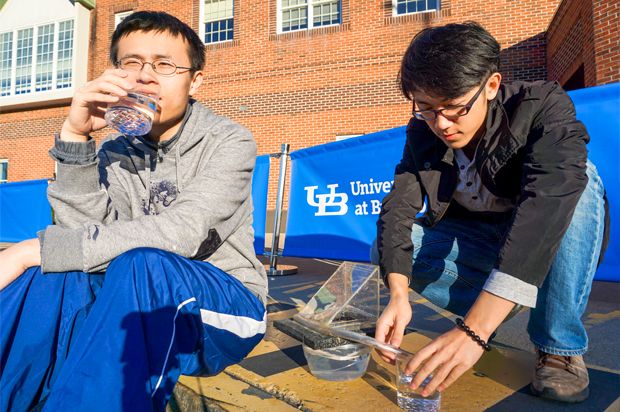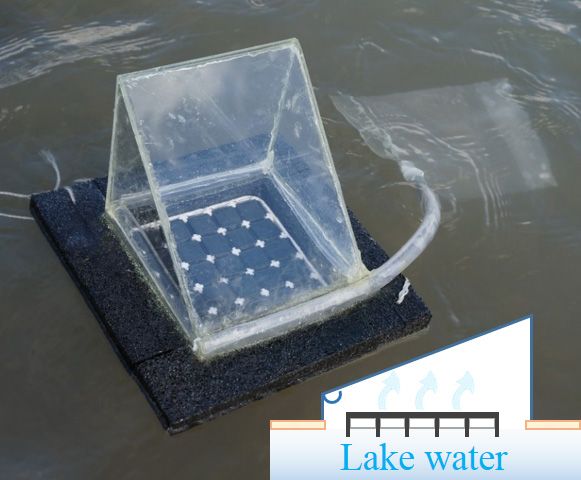Improving Ancient Water Cleaning Technology
Published on by Dusko Balenovic, Previous Network Manager at The Water Network in Technology
Sunlight has been used to filter water for centuries but improvements are always welcome, and now researchers at the University at Buffalo found a way to improve solar distillation.

Haomin Song (left) and Chenyu Li (right) (Credit: University of Buffalo)
Developing countries or areas hit by natural disasters sometimes have to rely on simple water treatment methods such as water distillation by sunlight.
Researchers at the State University of New York at Buffalo’s school of engineering found a way to improve solar distillation.
Solar distillation uses sunlight to evaporate the water and collect the condensated clean water.
What is specific about solar distillation is that, unlike other methods, it can purify salt or brackish water to fresh drinking water.
 Solar distillation is cheap but it’s a slow process and is not sustainable since it does not produce enough water for one person.
Solar distillation is cheap but it’s a slow process and is not sustainable since it does not produce enough water for one person.
The first recorded usage of solar distillation is in the 4th century B.C. Aristotle wrote about removing salt from seawater by solar heat causing vaporization.
Researchers made solar distillation more efficient by using a porous carbon black paper for their generator and condenser.
It is a material which does reflects extremely little sunlight and absorbs a lot of solar heat.
The carbon-covered paper enwraps the floating white polystyrene foam and the thermal insulator which holds the heat and makes the system function faster.
Researchers claim they can produce 3 times more water than similar systems do – up to 4.5 cups per hour when it is sunny.
They registered the company Sunny Clean Water and are hoping to have a production-ready prototype by the end of the year.
Media
Taxonomy
- Treatment
- Water Distillation
- Purification
- Filtration
- Technology
- Filters
- Filtration Solutions
- Filtration
- Solar Energy
- water treatment
- Water Filtration
- Solar Power
- Water Purification